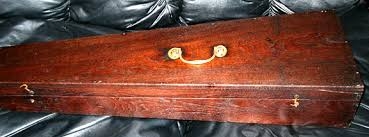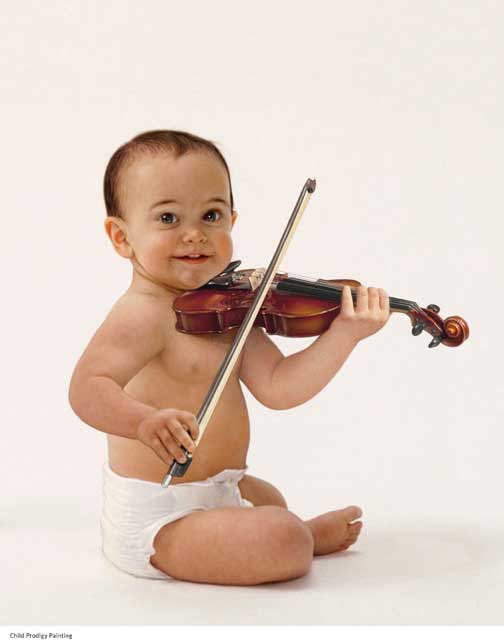Nineteenth-Century Gravegoods in Somerset July 6, 2014
Author: Beach Combing | in : Modern , trackbackThe burial of children is always extremely melancholy. The very tragedy of putting a loved child in the ground – memories of an Anglo-Saxon grave in Oxfordshire covered previously by this blog – leads relations, siblings and particularly parents to an unusual pitch of grief and in that grief they sometimes make unusual decisions. Certainly, any reading of early medieval archaeological literature on graveyards shows that children’s graves are often outliers and sometimes even maverick. In any case, on to the nineteenth-century (the 1870s, in fact) and here is a report from Meare a village just outside Glastonbury. Now burying anything with a good Christian in the 1800s was unorthodox, though on the sly lots did it. There is that great story about a book of poems and Queen Victoria insisted on several things being put in her coffin …. Indeed, burials were supposed to be sterile. But for now back to Meare and a heart-stricken family.
A short time since there was buried in the churchyard belonging to this village an infant under one year. In the coffin were placed a ladder, two candles, a box of matches, and a hammer… the coffin was in the shape of a fiddle.
Not exactly Episcopalianism is it? The journalist, presumably a high Anglican, who wrote up the report was scandalised:
What next? It is not known if any pence were put into the child’s hands to pay for passing Peter’s gate.
The two candles and the box of matches are rather beautiful and straightforward. But what is the purpose of the hammer and the ladder? Can it be that the parents believed that the child would, come the return of Christ, knock off the lid and climb up to walk on the earth, of which he or she had been so cruelly cheated? If so the ladder was presumably too small for the job given that it fit in what must have been a tiny coffin, fiddle shaped or otherwise. And what about that fiddle?
Further ‘research’ (twenty minutes on google) into nineteenth-century grave goods have brought up very little: can anyone help? drbeachcombing AT yahoo DOT com The only example we’ve found in Christendom, though it is an interesting example, is among Afro-American and Carribean communities where African customs seem to have survived the Atlantic crossing. There shells (and many other objects including light bulbs) were often included in burials or thrown on the coffin.
6 July 2014: Chris from Haunted Ohio Books is something of an expert on death. I was hoping for an email and was not disappointed. Thanks Chris!
On later grave-goods: Victoria went to her eternal rest laden with dozens of sentimental objects of which she had made a detailed list before she died. Some of the items: Albert’s dressing gown, a cloak of the Prince Consort’s, embroidered by his daughter, Alice, her wedding veil, a plaster model of Albert’s hand, a photograph of John Brown and a lock of his hair (which her physician placed in her hands, hidden under flowers), lockets, bracelets, a sprig of heather from Balmoral, and other assorted photographs and trinkets from her family. While the Queen’s mourning practices were extensively copied, there is not a lot in the mid-19th-century funerary literature about multiple items being placed in coffins. I have no doubt that it was done, but 19th-century graves are excavated so infrequently that the evidence is lacking. There were some superstitions about grave-goods which may explain a reluctance towards coffin deposits: “In the West Riding of Yorkshire, there is a strong feeling against burying a woman with her rings or jewellery. A gentleman told me that when his mother died he was desirous of leaving on her hand her wedding-ring, but was reproved for the wish by the women who laid her out. ‘Ye mun no send her to God wi’ her trinkets about her,’ they said.” [Sabine Baring-Gould quoted in Notes on the Folk-lore of the Northern Counties of England and the Borders, William Henderson.] It was believed that the dead should not be buried in or with the clothing of the living–that as the clothing decayed, the living person would become ill and die. In the Irish tradition, a corpse buried tied or with pins or even with a knotted thread to sew the shroud, will be confined to the grave for all eternity and the person guilty of the blunder will be haunted by them. I have at least one report of a body being dug up and pins removed to set the spirit at rest. Photographs of the living are also problematic, as this story shows: MRS. DELLBREGGE’S HOODOO It Is a Picture of Her Daughter in the Coffin of Her Sister.
St. Louis Globe-Democrat.
Mrs. Elizabeth Dellbregge of No. 1301 Avenue, called at the health department one morning and asked to be furnished with a permit to exhume the body of her dead sister, Mrs. Minnie Schober, which is buried in Concordia Cemetery. She said she was convinced a picture of her deceased daughter Annie had been placed in the coffin of Mrs. Schober prior to its interment. That picture was operating as a “hoodoo,” Mrs. Dellbregge declared, and she claimed that nothing but bad luck has visited her family since the picture was buried with Mrs. Schober’s remains last December. Among the direful calamities which Mrs. Dellbregge ascribes to the “hoodoo” have been the death of her daughter, Annie, which occurred two weeks ago; the disappearance from home of John, her eldest son, and frequent spells of sickness which have visited her other two sons and herself. Mrs. Dellbregge’s only reason for believing her dead child’s photograph to be in the coffin of Mrs. Schober is because she and her deceased daughter both had dreams to that effect.
Mrs. Dellbregge left the city hall without the permit she wanted as one of the health department rules is that no bodies shall be exhumed during the summer months.
Dallas [TX] Morning News 4 September 1898: p. 20
Of course jewelry was the most popular type of grave-good. There is a classic grave-robbing story about a woman buried with valuable rings; the sexton/grave-robber tries to cut off the lady’s finger to retrieve a ring and awakens her from suspended animation. She makes her way home; happy ending…
There are several Spiritualist tales about rings being apported into the séance room from beyond the grave. See one here.
There was a spate of articles in the 1890s about persons buried with valuable jewels. One Mrs. Mary Tuttle Johnson, known as “Mrs. ‘Diamond’ Johnson,” was determined to take it with her.
An 1896 article headline read:
TOMB
To Hold Safe Her Gems
Mrs. “Diamond” Johnson Will Be Buried With Her Jewels.
An Impregnable Grave Built to Baffle Any Attempt at Robbery.
It went on to describe some outlandishly expensive tomb and all its security features.
A story about two Civil War officers executed as spies mentions that one of them was buried with “a gold locket and chain on his neck. This locket contained a portrait and a braid of hair of his intended wife; her portrait was also in his vest pocket. These were buried with him at his request.”
Other grave-good stories. I’ve seen articles about about a miser being buried with his money because he had no heirs [wonder how long before someone dug him up?] (1907); a suicide asking to be buried with his wooden leg; an amputee asking for the limb to be added to the coffin, and a sheriff being buried with his trusty pistols (1914) I have a rather romantic story in my files about a young woman haunting a cemetery for a beloved crucifix that had failed to make it into her coffin. Other items requested to be buried with them by the dying: Favorite pipe, stickpin, shoemaking tools, a lottery ticket (which was later exhumed, as it was the winning ticket!) favorite dolls, books, a veteran’s pension papers. These stories mostly appear in post-1900s papers and it is obvious they are related for their novelty value.

I attach a photograph of a so-called “coffin violin case,” which I believe is what is meant in your post by “the coffin was in the shape of a fiddle.” Possible the word “case” was left off the end of the sentence. This style is very reminiscent of the gable-lidded coffins of the 17th century, perhaps a survival of that style.
I have a rather remarkable description from 1894 of an African-American cemetery in Washington DC where a variety of items were left on graves. The sexton told the reporter that the items were those most enjoyed or used by the dead person: toys, clothing, tools. They were left on graves so that the dead would “confine their manifestations to the cemetery; if not, they haunt the families who have neglected to provide [grave-goods.]” Medicine bottles are also left on the graves, with a glass or a spoon, so that the dead person can finish off the drug. The sexton gives an example of a hobby horse, half-buried on the grave of a teamster. The ghost of the man comes out of his grave and harnesses and unharnesses the toy horse. If he didn’t have that to occupy himself, the sexton said, he’d have to haunt his wife.
An article about a New York cemetery from 1883 describes toys left on children’s graves, including a fully furnished dolls house, and a child’s muslin frock displayed in a glass case. It also mentions a brown tea-pot left on a wife’s grave by her widower, who comes weekly to check that it is still there. There is no mention of this being an Africa-American cemetery.
Bruce T, 30 Mar 2017: Locks of hair were still common into the 80’s here. Bottles of whisky and other intoxicants are commonly put in a man’s coffin and I’ve personally stood watch over the men who do the burying to make sure that the woman in questions jewelry stays in the coffin until they’re done with their work and gone, the last time about a decade ago. Favorite toys are common for children, as are pictures of the family and friends in all burials. The big thieves of grave goods here are the funeral home operators themselves. They do their main pilfering after visitations the night before the funeral. It’s best to insist on an overnight traditional sitting up with the body to keep that foolishness in check. If the coffin is always in sight they can’t go digging for buried treasure. Getting caught red handed plucking the dead is bad for business. Funeral directors are bigger thieves than used car salesmen.



